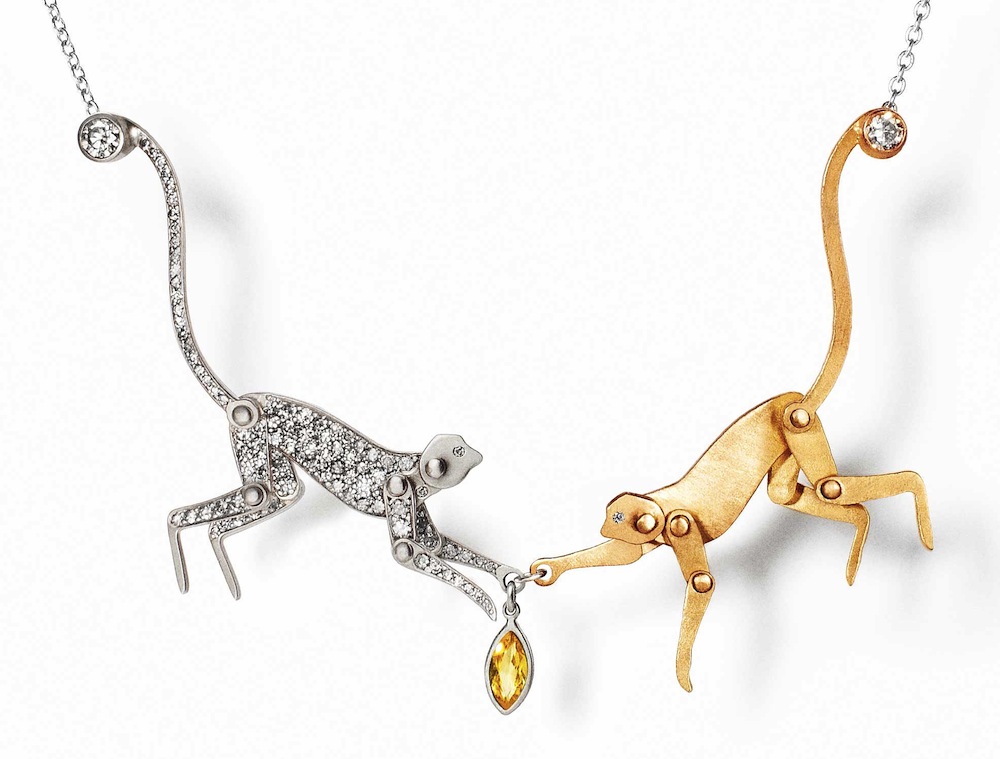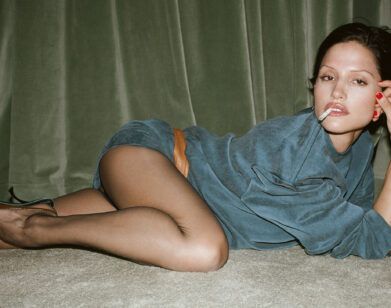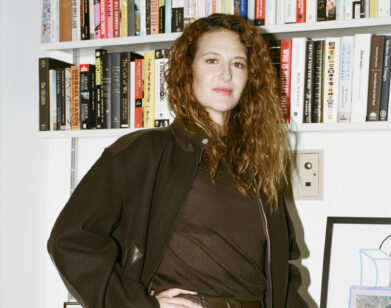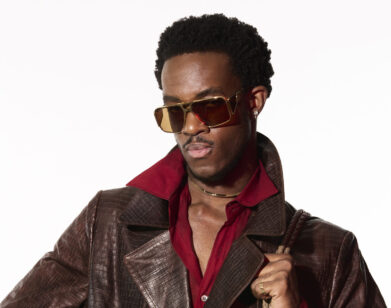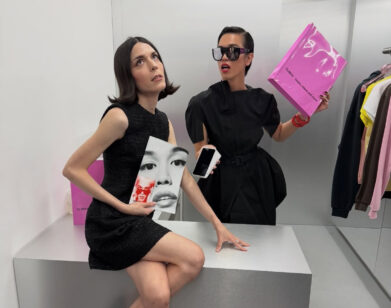Marc Alary’s Wilderness
Enter Marc Alary’s world, and you will meet a menagerie of creatures. Jewel-encrusted monkeys swing into battle, grasping at yellow sapphire bananas, while cheetahs race around in circles, chasing tail in an endless golden band. Now based in New York, Alary grew up in the South of France where his encounters with exotic wildlife were somewhat limited. Yet through daydreaming and a fascination with all things flora and fauna, his very original label was born. Despite its ingenuity, Alary is the first to admit that it hasn’t always been smooth sailing—being a younger player in the fine jewelry game has its challenges. But some good news came only last week, when Alary’s beautiful work was recognized by the CFDA/Vogue Fashion Fund, who awarded him with the runner-up spot, along with $100,000. The earnest designer was still riding high off the accolade when Interview caught up with him at his studio in Manhattan.
PAUL BUI: The new collection looks beautiful. It’s so nice to see the pieces up close. Is there a reptilian theme going on here?
MARC ALARY: In this collection I really wanted to explore some animals that I wouldn’t necessarily explore, especially reptiles and crocodiles, which I have a phobia of. I read a book about this artist who started to collect insects, which he had a huge phobia of, and he pushed himself to do it. I said, why not do it for myself.
BUI: Have you always had this fascination with animals, even from a young age?
ALARY: Yes, absolutely. My mom’s a real animal lover. She had all these magazines and books full of all kinds of animals, lots of National Geographic. So I grew up surrounded by these visuals. Also, my grandmother was an antique dealer, so I grew up around all of these really interesting things. One of the things that stuck with me was her crazy collection of animal ashtrays, made of every single animal foot. It’s kind of morbid but it was so fascinating.
BUI: What sort of animals?
ALARY: I hate to say it, because I love animals and I always defend them, but she had a real elephant foot turned into an ashtray, there was an antelope, a gazelle, tigers, leopards. But it was a collection made probably in the 18th or 19th century, when this big wave of explorers went to Africa and brought back these objects—the kind of objects that locals would make to satisfy the artistic curiosity of people with 19th-century tastes.
BUI: The south of France doesn’t sound like a place where you would find a lot of exotic wildlife.
ALARY: Not at all. I think the wildest thing we ever had were cows and sheep—domesticated animals. I had one or two trips while I was growing up, to a farm or to the mountains, but nothing really special. For me it was more about dreaming about them. I’m sure if I’d grown up in a place like Africa, maybe I would not have taken such a great interest in them. It’s almost like if you dream of other countries, you have this fantasy based on their reputation. Sometimes people say to me, “I can’t believe you haven’t been on safari yet”—part of me is quite scared to do it, because it will ruin the illusion of it. I have this world where my animals are quite crazy. A lot of my inspiration comes from books.
BUI: Do you remember the first piece of jewelry or object you made?
ALARY: The first piece I made commercially was a pendant—a swan necklace for Marc Jacobs. But the very first, which I think was even better for me, was the panther ring. I made it flat, and I bent it into a ring. I didn’t even know whether it would work, and when I saw the end result, I was beyond happy. In some ways, I was blessed that I didn’t study jewelry. When designing a lot of my pieces, other jewelers would say, “Oh, it’s impossible—too much work.” So I glued stuff: wax, glue, metal, every kind of thing—but it worked—and it pushed me to go further and further.
BUI: A lot of this seems very technical. Was it all just by trial and error?
ALARY: Yeah, just thinking about it. Part of the way I function is by engineering a piece, so I spend a lot of time trying to work it out and rebuilding it—stuff like hidden mechanisms.
BUI: Your jewelry is also very playful, but it’s all fine jewelry. None of it is costume jewelry. What sort of audience have you found that really resonates with your work?
ALARY: I don’t believe in disposable jewelry. I think whenever you buy a piece, you should have the intention of keeping it forever. I don’t like to throw away things, so I like to really limit whatever I buy to the finest quality. I want my customers to really have that in mind. If they buy a piece, the craftsmanship has to be really good. We’re in a generation where the way people consume is very different from before. I see that people would rather buy a pair of shoes for $1000 that will last maybe less than a season, rather than buying a piece of jewelry you can own forever. But I’m not criticizing that; it’s just an observation of the market. I see my customer base growing slowly but surely, and I like that. People say to me “Please keep making your monkey, because I’m saving up for it!”—that’s really what you want. When you work in fine jewelry, most of your competitors have been in business for more than five generations. It’s difficult, but you have to stay true to yourself, and people really respond to that.
BUI: Tell me about the CFDA. What was it like being involved in that competition, and winning the runner-up prize?
ALARY: It’s so surreal. I would say the biggest part for me was the beginning—to be part of 10 finalists was just really amazing. And winning that prize is still really difficult for me to process! It was a tremendous experience. We met so many people; the entire community did so much for us.
BUI: I also hear you’re a big fan of Julianne Moore. What was it like having her present you with the award?
ALARY: I probably made a huge fool of myself on the night, but it was really quite funny. I find inspiration in a lot of things other than jewelry. and one of my biggest inspirations is movies. One of my favorite movies while I was studying was Magnolia. Seeing her in that movie for some reason really touched a chord. I think everyone talks a lot about Tom Cruise’s performance in the film, but she was unbelievable! I always remember her crying in the car and thinking she was fantastic. She also has some similarities to a generation of actors like Elizabeth Taylor—real artists, real actors—she’s a real woman with a sense of fashion. She’s classy. I have nothing against actresses nowadays, but I think Julianne is the kind of person you would consider as a muse. When people ask “who would be your muse?” today, the only person I could say in the current generation of actors would be Julianne Moore. And before that, it was women like Charlotte Rampling.
FOR MORE ON MARC ALARY, VISIT HIS WEBSITE.

